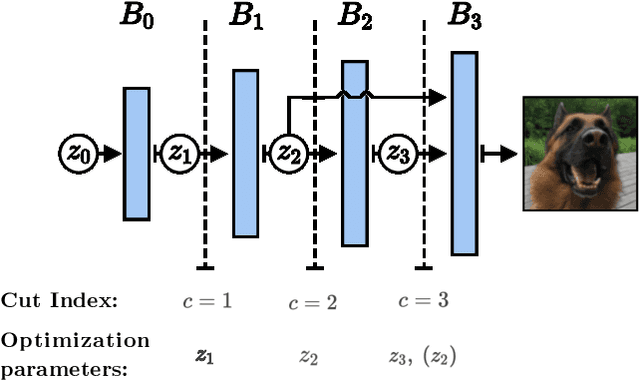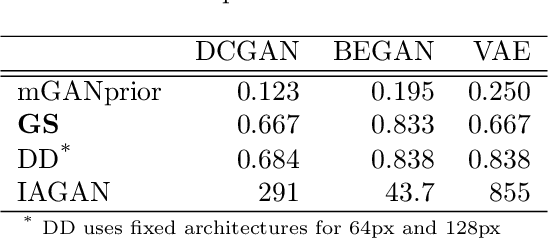Max Daniels
On the Contractivity of Stochastic Interpolation Flow
Apr 14, 2025Abstract:We investigate stochastic interpolation, a recently introduced framework for high dimensional sampling which bears many similarities to diffusion modeling. Stochastic interpolation generates a data sample by first randomly initializing a particle drawn from a simple base distribution, then simulating deterministic or stochastic dynamics such that in finite time the particle's distribution converges to the target. We show that for a Gaussian base distribution and a strongly log-concave target distribution, the stochastic interpolation flow map is Lipschitz with a sharp constant which matches that of Caffarelli's theorem for optimal transport maps. We are further able to construct Lipschitz transport maps between non-Gaussian distributions, generalizing some recent constructions in the literature on transport methods for establishing functional inequalities. We discuss the practical implications of our theorem for the sampling and estimation problems required by stochastic interpolation.
Score-based Generative Neural Networks for Large-Scale Optimal Transport
Oct 26, 2021



Abstract:We consider the fundamental problem of sampling the optimal transport coupling between given source and target distributions. In certain cases, the optimal transport plan takes the form of a one-to-one mapping from the source support to the target support, but learning or even approximating such a map is computationally challenging for large and high-dimensional datasets due to the high cost of linear programming routines and an intrinsic curse of dimensionality. We study instead the Sinkhorn problem, a regularized form of optimal transport whose solutions are couplings between the source and the target distribution. We introduce a novel framework for learning the Sinkhorn coupling between two distributions in the form of a score-based generative model. Conditioned on source data, our procedure iterates Langevin Dynamics to sample target data according to the regularized optimal coupling. Key to this approach is a neural network parametrization of the Sinkhorn problem, and we prove convergence of gradient descent with respect to network parameters in this formulation. We demonstrate its empirical success on a variety of large scale optimal transport tasks.
Generator Surgery for Compressed Sensing
Mar 01, 2021



Abstract:Image recovery from compressive measurements requires a signal prior for the images being reconstructed. Recent work has explored the use of deep generative models with low latent dimension as signal priors for such problems. However, their recovery performance is limited by high representation error. We introduce a method for achieving low representation error using generators as signal priors. Using a pre-trained generator, we remove one or more initial blocks at test time and optimize over the new, higher-dimensional latent space to recover a target image. Experiments demonstrate significantly improved reconstruction quality for a variety of network architectures. This approach also works well for out-of-training-distribution images and is competitive with other state-of-the-art methods. Our experiments show that test-time architectural modifications can greatly improve the recovery quality of generator signal priors for compressed sensing.
Reducing the Representation Error of GAN Image Priors Using the Deep Decoder
Jan 23, 2020



Abstract:Generative models, such as GANs, learn an explicit low-dimensional representation of a particular class of images, and so they may be used as natural image priors for solving inverse problems such as image restoration and compressive sensing. GAN priors have demonstrated impressive performance on these tasks, but they can exhibit substantial representation error for both in-distribution and out-of-distribution images, because of the mismatch between the learned, approximate image distribution and the data generating distribution. In this paper, we demonstrate a method for reducing the representation error of GAN priors by modeling images as the linear combination of a GAN prior with a Deep Decoder. The deep decoder is an underparameterized and most importantly unlearned natural signal model similar to the Deep Image Prior. No knowledge of the specific inverse problem is needed in the training of the GAN underlying our method. For compressive sensing and image superresolution, our hybrid model exhibits consistently higher PSNRs than both the GAN priors and Deep Decoder separately, both on in-distribution and out-of-distribution images. This model provides a method for extensibly and cheaply leveraging both the benefits of learned and unlearned image recovery priors in inverse problems.
 Add to Chrome
Add to Chrome Add to Firefox
Add to Firefox Add to Edge
Add to Edge